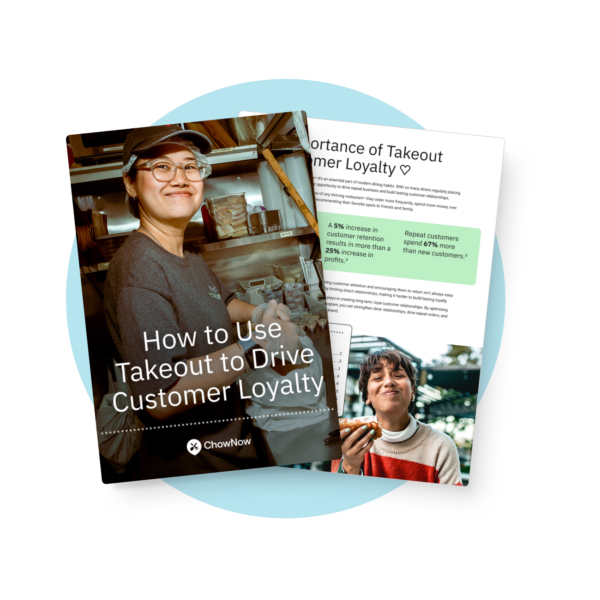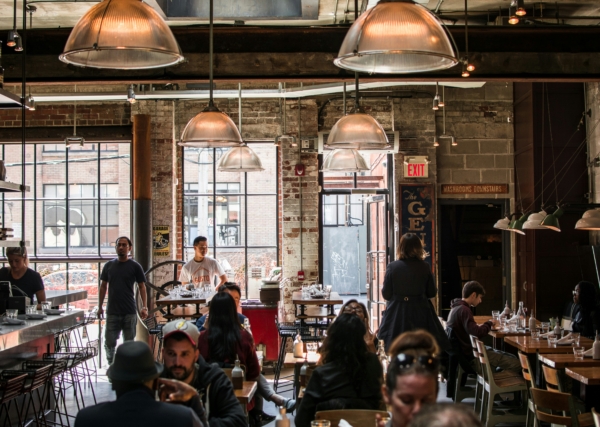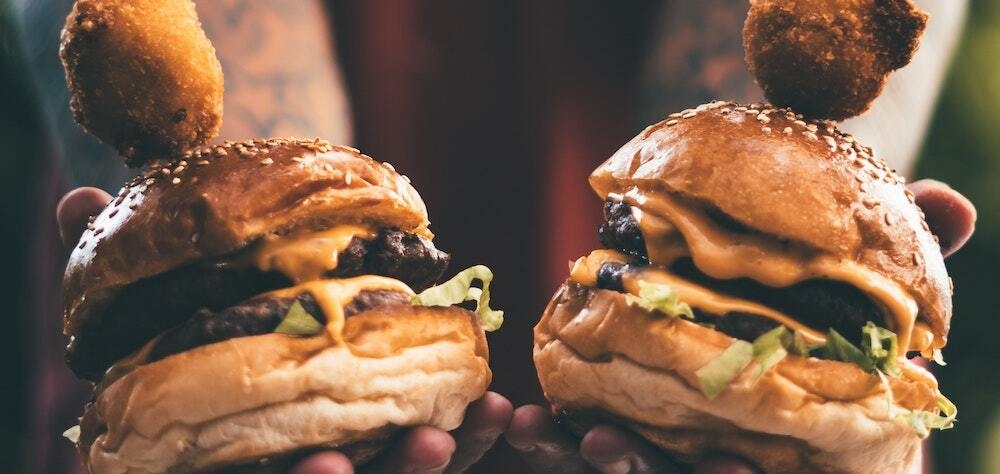SMS Marketing For Restaurants: How To Drive More Orders With Text Messaging

It’s easy to see why SMS marketing for restaurants is so effective: everyone spends hours on their phone every single day.
Even older, less tech-savvy generations average over 4 hours a day tapping and scrolling away on their phones.
Unlike email (which already performs well with a 42.35% open rate) and social media, text message marketing gives you a direct line to customers that can’t be matched by any other marketing method.
SMS marketing boasts a staggering 98% open rate, which, when you think about it, isn’t surprising considering how our phones are never really that far away from us.
The average American checks their phone 96 times a day, that’s once every ten minutes.

The tricky part is building an SMS marketing strategy that makes sure your customers stay opted in, your messages don’t come across as spammy, and every text you send feels genuinely worth opening.
In this article, you’ll learn:
- Why text message marketing outperforms email and social media for customer engagement
- How to grow a quality subscriber list without being annoying or intrusive
- Proven SMS campaigns that help drive more orders and repeat visits
What Is SMS Marketing?
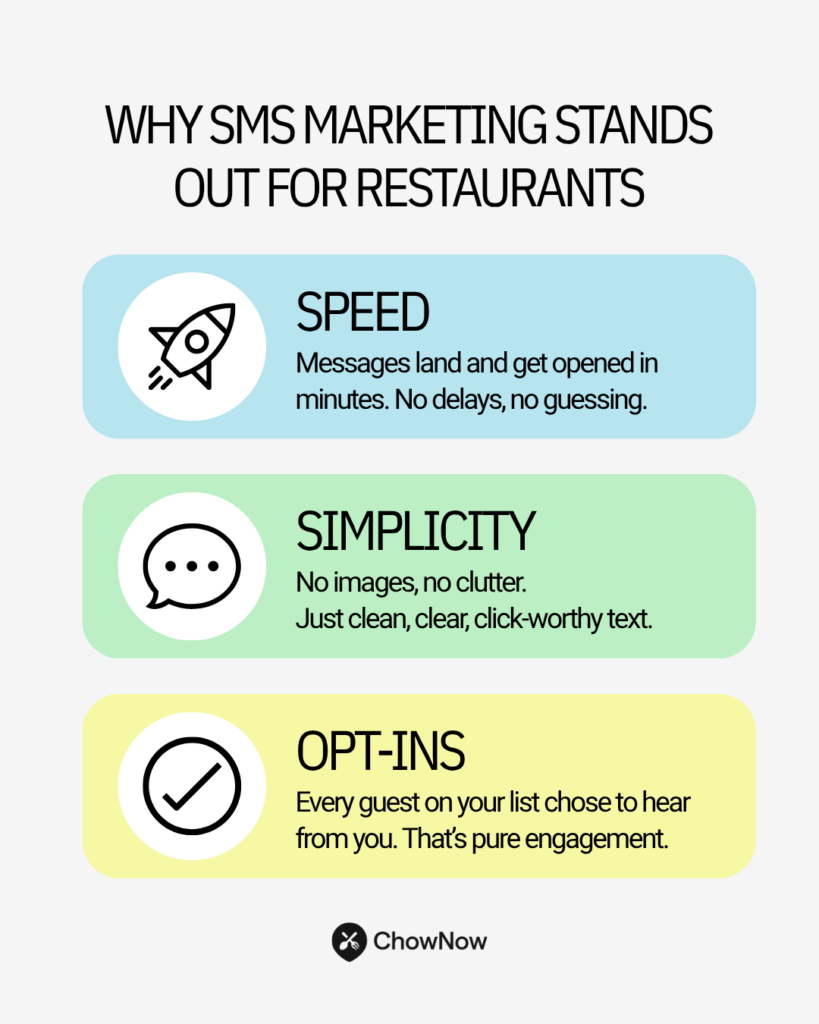
SMS marketing (short for Short Message Service marketing) is a way for restaurants to send promotional or transactional text messages directly to their customers’ phones.
Unlike email or social media posts, these messages don’t get buried in an inbox or throttled by an algorithm. They pop up instantly, right in front of your guests.
At its core, text marketing is about direct communication. You’re not broadcasting a message into the void and hoping someone sees it—you’re speaking directly to a real person who has chosen to hear from you.
That makes it one of the most cost-effective and personal methods of marketing for restaurants today.
Three key things set SMS marketing apart from other channels:
- Speed: Messages are typically delivered and opened within minutes.
- Simplicity: No design or images, no spam filters—just clear, concise text.
- Opt-ins: Customers give you explicit permission, which means your audience is already engaged.
There are many ways to use restaurant text messaging, but most fall into a few common categories:
- Limited-time promotions and exclusive deals
- Reminders for loyalty program rewards or personalized birthday wishes
- Announcements about new menu items, events, or seasonal specials
- Branded confirmations for online orders or reservations
- “We miss you,” reminders to re-engage lapsed guests
Whether you want to boost customer engagement, increase sales, or simply stay top-of-mind, text marketing for restaurants gives you the tools to do it fast.
Why SMS Marketing Works For Restaurants
There’s a reason more and more restaurants are turning to SMS marketing: it gets results quickly.
Unlike social media posts that are at the mercy of algorithms or email marketing campaigns that run the risk of sitting unopened, text messages show up front and center.
That kind of direct communication gives you an advantage—your guests see your message, and they see it fast.
For restaurant operators, this opens up all kinds of high-impact use cases:
- Promote limited-time offers when you need to fill tables on the fly
- Drive traffic with exclusive deals your guests can’t get anywhere else
- Remind guests about your loyalty program
- Confirm online orders or reservations with branded, real-time updates
- Re-engage lapsed diners with targeted SMS campaigns
It’s also one of the most cost-effective marketing tools in the restaurant industry. You don’t need a big budget or a design team to send a great text message.
A short, timely offer can bring in a rush of orders during a slow period—it cuts through the noise and reaches your customers where they’re already spending their time.
Texting, when done well, feels personal, not spammy—just simple, direct messages that drive sales.
On top of that, text message marketing helps you foster loyalty. When customers opt in to your restaurant text messaging, they’re saying they want to hear from you.
And when you consistently send useful, relevant messages, they’re more likely to come back again and again.
Let’s dive into the first step of SMS marketing for restaurants: growing your SMS list.
How To Grow Your SMS List
A successful SMS marketing strategy starts with a high-quality, opt-in subscriber list. Fortunately, building a list doesn’t have to be complicated or time-consuming.
Make It Easy To Sign Up
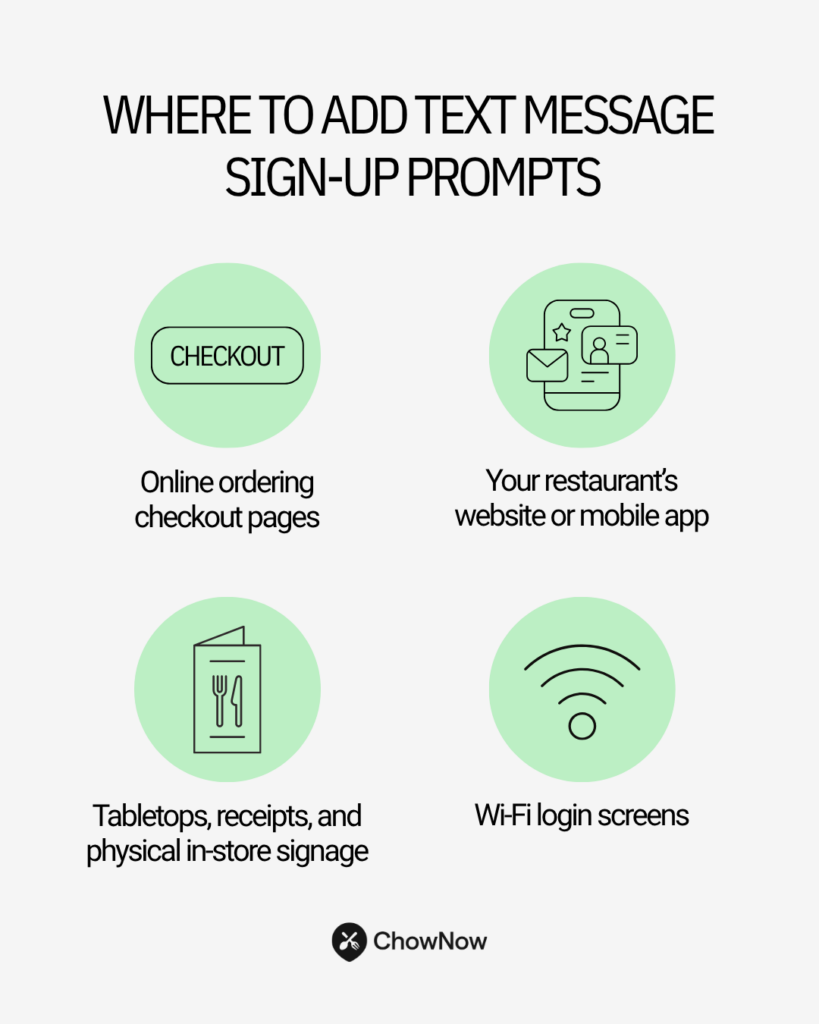
The key to growing your restaurant text messaging list is visibility and simplicity. Make it effortless for guests to opt in by adding sign-up prompts at:
- Online ordering checkout pages
- Your restaurant’s website or mobile app
- Tabletops, receipts, and physical in-store signage
- Wi-Fi login screens
Wherever a guest interacts with your restaurant, there should be an easy, obvious chance to sign up for text messages.
Offer a Simple Incentive
Companies ask people for their phone numbers all the time, so to get them to agree, you need to sweeten the deal.
Offer a free appetizer, a small discount, or access to exclusive deals, and you’ll grow your SMS list quickly. It doesn’t have to be expensive—it just has to feel worth it.
For example, “Sign up for texts and get a 15% discount on your next visit.”
Set Expectations Upfront
People are more likely to join your restaurant text messaging list (and stay on it) if they know what they’re signing up for. Let them know:
- How often you’ll be sending messages (once or twice a week max)
- What kind of texts they’ll receive—promotional messages, event updates, or loyalty offers
- That they can opt out any time
For example: “Join our text club for weekly deals, new menu items, and event notifications.”
Being upfront not only encourages more opt-ins, it also helps reduce unsubscribes later.
Tips For Sending Effective Messages
Once you start building your subscriber list, the next step is learning how to send text messages that actually get results, without annoying your guests.
Here are some best practices to make your SMS marketing campaigns effective, timely, and most importantly, welcomed by your guests.
Keep it short and clear
Brevity is everything. Text marketing works best when your messages are concise and easy to act on. Aim for one idea, one offer, and one call to action per text.
For example: “2 for 1 tacos today only! Tap to order before 5 PM!”
Your guests won’t read long messages—they want quick, helpful updates that are easy to digest at a glance.
Timing is everything

The best SMS campaigns hit when your guests are most likely to take immediate action, usually late morning or early afternoon. Avoid early mornings, late nights, or times that might feel intrusive.
Test and adjust based on customer preferences, but a good rule of thumb is to send text around 11 AM for the lunch crowd or between 4-5 PM as guests start thinking about dinner.
Always include a call to action
Every text message should ask the reader to do something—order now, book a table, check out a special. Use strong, actionable phrasing like:
- “Tap to order now”
- “Show this text for 10% off”
- “Click to view tonight’s menu”
This makes your SMS campaigns feel purposeful, not passive.
Don’t overdo it
One or two texts per week is more than enough. If you bombard guests with too many marketing messages, they’ll tune out—or worse, unsubscribe.
Keep your subscriber list healthy by only sending messages when you truly have something valuable to share. That’s how you maintain better engagement over time.
Proven SMS Campaign Ideas
Once you’ve built a strong subscriber list, you can experiment with and test out a variety of these tried-and-true SMS marketing campaigns to boost sales, re-engage diners, and build loyalty.
“Today Only” Flash Deals
If you need to fill tables or boost takeout on a slow day, send out a short, time-sensitive text message.
For example: “Today only: Buy one pizza, get the second one half off. Tap to order.”
These messages play on urgency and can lead to immediate action when timed right, boosting sales.
New items announcement
Make diners feel like insiders by letting subscribers know first when you’re releasing new menu items or having special events.
For example: “New special alert! Spicy miso ramen this weekend only. Hit the link to make a reservation.”
This creates a sense of exclusivity and keeps your guests engaged.
Loyalty rewards reminders
Keep your customer base engaged by reminding them of their progress in your loyalty program or surprising them with unclaimed rewards.
Example: “You’re just 1 order away from your next reward! Order now!”
Restaurant text message marketing is especially powerful when it makes people feel appreciated.
“We miss you” messages
Send friendly nudges to guests who haven’t visited or placed an online order in a while. These personalized messages can include small incentives to bring them back.
For example: “It’s been a minute! Come back this week and enjoy 10% off.”
Re-engagement texts help foster loyalty and increase orders.
Order and reservation confirmation
Send branded confirmations for online orders or reservations to keep your customer experience seamless. You can even brand these messages with your restaurant name to make the experience feel polished and consistent.
For example: “Thanks for your order with [restaurant name]! We’ll text when it’s ready.”
These utility-focused SMS messages reduce confusion and improve trust.
Use SMS To Stay Top of Mind With Guests
SMS marketing is about subtlety and simplicity—when done right, it keeps your restaurant in your guests’ thoughts without becoming spammy or overwhelming. With short, well-timed text messages, you can drive more orders and build stronger relationships with every send.
Frequently Asked Questions About SMS Marketing for Restaurants
Is SMS marketing legal for restaurants?
Yes, SMS marketing is legal for restaurants as long as you get explicit permission from guests (opt-in) and provide a clear way for them to opt out at any time.
To stay compliant with texting laws like the TCPA and CTIA, use a reputable SMS platform that handles consent and unsubscribes properly.
How often should I send texts to my guests?
Most restaurants find success sending 1–2 SMS messages per week. This frequency helps you stay top-of-mind without overwhelming your customers. Every message should provide real value like exclusive offers, time-sensitive deals, or event invites.
What kind of return can I expect from SMS campaigns?
SMS marketing can deliver significantly higher ROI than email or social media. With open rates as high as 98%, even one well-timed message can lead to a spike in online orders, foot traffic, or loyalty signups especially if you include a strong CTA.
How do I collect phone numbers without annoying my guests?
To collect phone numbers effectively, offer value and be transparent. Add opt-in prompts at checkout, during online orders, on receipts, or with signage. Incentivize signups with perks like a free appetizer or exclusive discount, and clearly state how often you’ll text and what kind of messages guests can expect.
Can I automate my restaurant’s SMS messages?
Yes—most modern texting platforms include automation features. You can schedule marketing messages, set up auto-replies, and even trigger personalized messages for things like “we miss you” text or first-time visits.
How do I stop my messages from feeling spammy?
To keep your text marketing from feeling spammy keep your messages short, relevant, and timely. Personalize when possible, avoid sending too frequently, and make sure each text has a clear value or reason to engage. Respect your guests’ attention and only send messages you’d want to receive yourself.
What’s the best time of day to send texts?
The best time of day to send texts is late morning (11 a.m.) and mid-afternoon (around 4 p.m.) tend to work well. That’s when guests are thinking about lunch or dinner, and most likely to act on a tempting text message.
